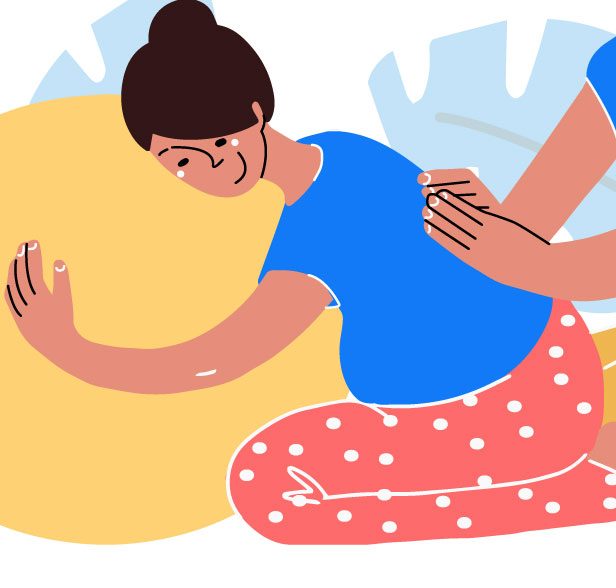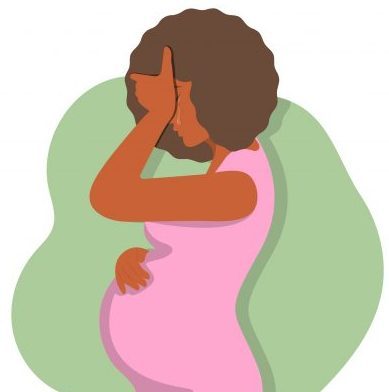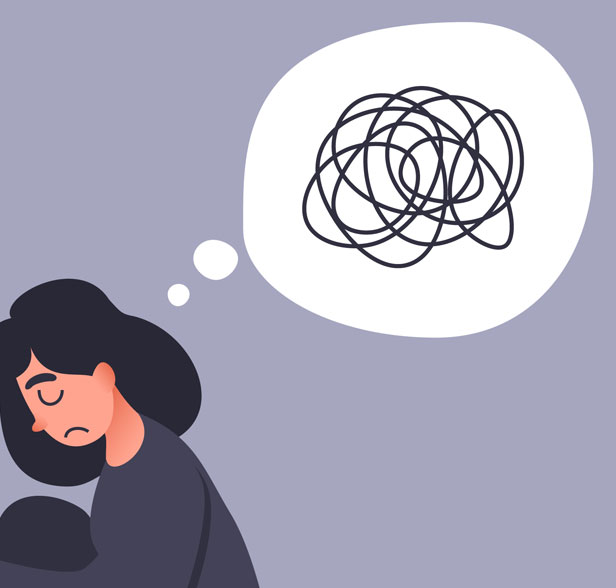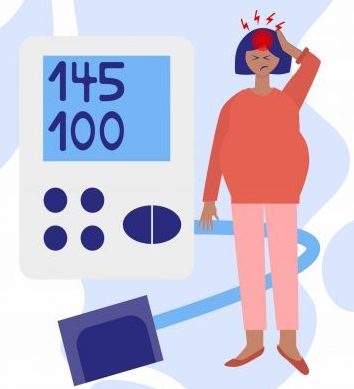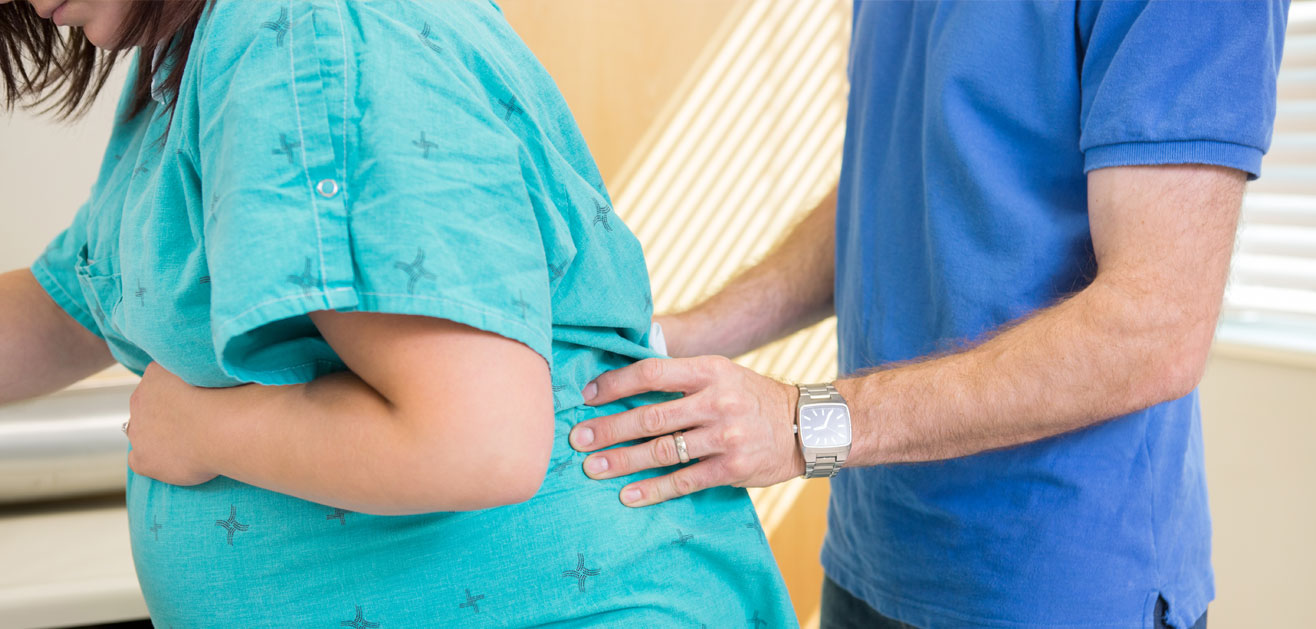
A 2020 Cochrane Systematic Review (1) looked at the evidence from 28 studies to determine if currently available studies show that either acupressure or acupuncture can help with pain management during labor. 13 studies used acupuncture and 15 involved acupressure. All the studies were performed in a hospital setting and a variety of acupoints were chosen for stimulation.
Acupuncture Studies:
The 2020 Cochrane Systematic Review (1) looked at 13 acupuncture studies. These studies used either acupuncture with no needle stimulation after insertion, manual stimulation or electro-acupuncture stimulation. These groups were compared to others who had sham acupuncture (the researchers did their best to make the participants think they were getting true acupuncture when they were not), usual care, no treatment or sterile water injections for pain relief. 8 of the studies used an individualized set of points that was adjusted based on the woman’s needs, and 5 studies used a predetermined set of acupuncture points for all women. Study participants rated their pain on a numeric scale with lower numbers corresponding to less pain.
After analyzing the data from all 13 studies, the review authors concluded that when compared to sham acupuncture, true acupuncture may increase satisfaction with pain management and decrease the use of pharmacological pain relief methods. The evidence is rated as moderate for these two outcomes. When compared with usual care they concluded that acupuncture has an uncertain effect on pain intensity or satisfaction with pain relief. There may be little to no effect on rates of c-section or assisted vaginal birth.
Aside from the 2020 Cochrane Review, one review of 16 systematic reviews (Bergamo et al 2018) concluded that “Acupuncture might be an option for alleviating pain during labor” (2). One individual study by Citkovitz et al showed potentially useful results and is worth noting (3). It involved 45 people in labor at an urban hospital in New York City, and studied individualized acupuncture points used throughout the labor and delivery process (even if an epidural was requested). Although the study was small and not a randomized controlled trial, it is interesting because it found a decreased cesarean rate (7% with acupuncture vs 20% without) and higher reported levels of satisfaction of the birthing parent. 87% of participants reported they felt the acupuncture had helped them. The study also showed that acupuncture may be feasible in a hospital setting because a high level of safety was found (no needlestick injuries or other adverse effects reported) and 83% of nurses said the acupuncture didn’t interfere in their work. This was a unique study because it used individualized points which were chosen based on a study protocol manual, and allowed the acupuncture to be continued even if an epidural was given (almost all other studies discontinued it after an epidural).
For more detailed information on the evidence on acupuncture during labor, please scroll down to the “Detailed Research Summaries” section.
Acupressure Studies
The 15 studies included in the Cochrane Review which involved acupressure each used a fixed set of acupoints, meaning that every laboring person in each individual study had the same points stimulated. The points were not chosen or adjusted based on the individual or their feedback. However the points used were not the same in each study. The most commonly used points across all studies were LI 4 and SP 6 (one or borth of these points was used in 13 studies). One study looked at ear (auricular) point stimulation only, while another study used a completely different and clinically unusual set of points. The acupressure group was compared to either sham acupressure (light touch, gentle massage or stimulation of non-acupressure points), usual care or a combined control of both. The researchers measured outcomes such as pain intensity, the amount of pharmacological analgesia used, c-section rates and overall satisfaction with pain relief. Researchers measured the intensity of pain using a rating system called a Visual Analog Scale (VAS), in which the person in labor rated their pain on a scale of either 1 to 10 or 1 to 100, with lower numbers indicating less pain.
When the authors of the Cochrane Review compiled the results of all the studies and performed a statistical analysis, they concluded that acupressure may help relieve pain and reduce c-sections. For other outcomes, the researchers were uncertain about the effects because the evidence was of low quality. This means that the number of studies that currently exist don’t allow firm conclusions to be drawn- we need more studies of a similar nature so that we can be confident in the data.
One study which deserves mention although it was not included in the 2020 Cochrane Review included 176 low risk, nulliparous participants in Australia (4). Roughly half were assigned to attend a 2 day antenatal education course where they were taught 6 techniques for pain management during labor called The Complementary Therapies for Labor and Birth Protocol (CTLB). This included education in acupressure, visualization and relaxation, breathing, massage, yoga techniques and facilitated partner support. The other half, the control group, received standard care alone. The participants in the CTLB group had a statistically significant reduction in epidural use (63% relative reduction) and cesarean section rate (44% relative reduction), and statistically significant reductions in the rates of labor augmentation, length of the second stage of labor and reduced perineal trauma. The acupressure points and their descriptions can be found in this simple guidebook created by one of my mentors, Debra Betts. Although this is just one study, it was well designed and demonstrates the potential impact of using a variety of noninvasive, non-pharmacological complementary techniques which are tailored to the individual in labor.
For more detailed information on the evidence on acupressure during labor, please scroll down to the “Detailed Research Summaries” section.
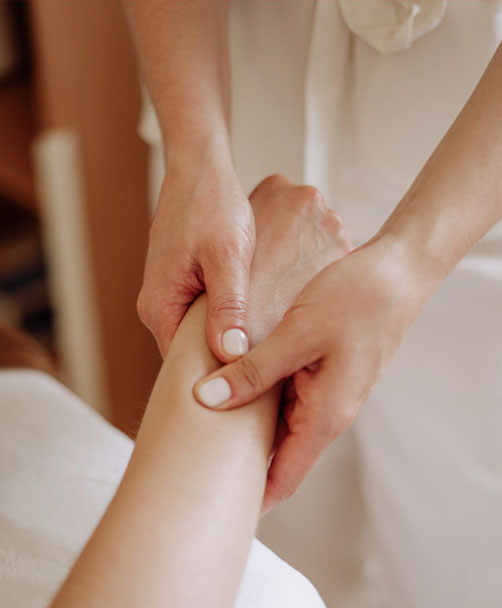
Why do women want alternatives to pharmaceutical pain relief during labor?
There is a high level of interest in complementary pain relief techniques during labor. People often describe wanting a “natural birth” (6) and want to do everything possible to reduce medical interventions during birth. A 2014 Systematic Review by Chaillet found that “tailored nonpharmacologic approaches, based on continuous support, were the most effective for reducing obstetric interventions”. These continuous support approaches helped to reduce pain, reduce interventions, increase satisfaction with the overall birth experience and feelings of support and control and improved outcomes.
In a 2010 article (7), Leap et al discuss the concepts of the “working with pain” approach vs the “pain relief” approach. Supportive, nonpharmacological methods tend to aid birthing people in “working with pain” and include methods such as acupuncture, acupressure, sterile water injections, hypnotherapy, yoga, breathing. In contrast, “pain relief” methods seek to completely eliminate pain and include pharmacological methods such as epidurals. For more information on this concept please see the link to the article in the references section.
How might acupuncture and acupressure work to relieve pain?
Several mechanisms appear to be at work (source). Researchers have proposed that diffuse noxious inhibitory control may explain acupuncture’s ability to relieve pain as well as gate control theory. In addition there is evidence that acupuncture stimulates the body’s endogenous opioid system- causing the release of endorphins which act to relieve pain. There is also evidence that acupuncture stimulates the part of the brain that releases serotonin, which affects our mood.
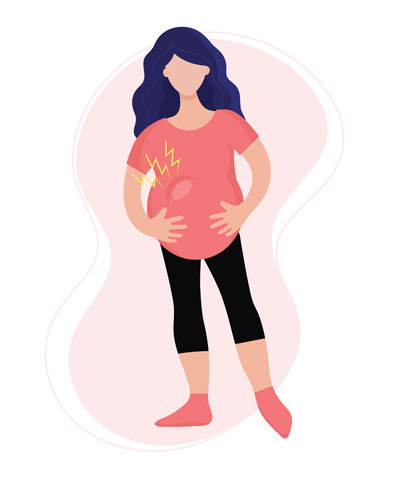
Resource Links
- Evidence Based Birth: review on acupuncture and acupressure during labor. https://evidencebasedbirth.com/acupuncture-and-acupressure-for-pain-relief-during-labor/
- Evidence Based Birth Pain Management Series https://evidencebasedbirth.com/category-pain-management-series/
- Debra Betts’ Guidebook on acustimulation points for pain relief during labor: https://acupuncture.rhizome.net.nz/download-booklet/
- BirthCourse Antenatal Education Course described in the acupressure research summary: https://www.birthcourse.com/
- Working with pain in labour- Leap et al 2010
Sources
- Smith CA, Collins CT, Levett KM, Armour M, Dahlen HG, Tan AL, Mesgarpour B. Acupuncture or acupressure for pain management during labour. Cochrane Database of Systematic Reviews 2020, Issue 2. Art. No.: CD009232.
- Bergamo TR, Latorraca COC, Pachito DV, Martimbianco ALC, Riera R. Findings and methodological quality of systematic reviews focusing on acupuncture for pregnancy-related acute conditions. Acupunct Med. 2018 Jun;36(3):146-152. doi:10.1136/acupmed-2017-011436. Epub 2018 Mar 20. PMID: 29559431.
- Citkovitz C, Klimenko E, Bolyai M, Applewhite L, Julliard K, Weiner Z. Effects of acupuncture during labor and delivery in a U.S. hospital setting: a case-control pilot study. J Altern Complement Med. 2009;15(5):501-505. doi:10.1089/acm.2008.0422
- Levett KM, Smith CA, Bensoussan A, et alComplementary therapies for labour and birth study: a randomised controlled trial of antenatal integrative medicine for pain management in labourBMJ Open 2016;6:e010691. doi: 10.1136/bmjopen-2015-010691
- Citkovitz, C. (2020). Acupressure and acupuncture during birth: An integrative guide for acupuncturists and birth professionals. London: Singing Dragon.
- Chaillet N, Belaid L, Crochetière C, Roy L, Gagné GP, Moutquin JM, et al. Nonpharmacologic approaches for pain management during labor compared with usual care: a meta-analysis. Birth 2014;41(2):122-37.
- Working with pain in labour- Leap et al 2010
- Levett KM, Dahlen HG, Smith CA, et al. Cost analysis of the CTLB Study, a multitherapy antenatal education programme to reduce routine interventions in labour. BMJ Open 2018;8:e017333. doi:10.1136/bmjopen-2017-017333


